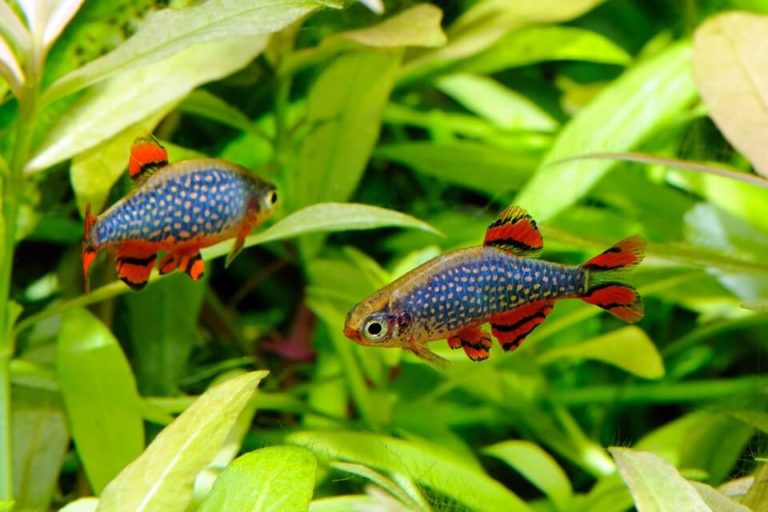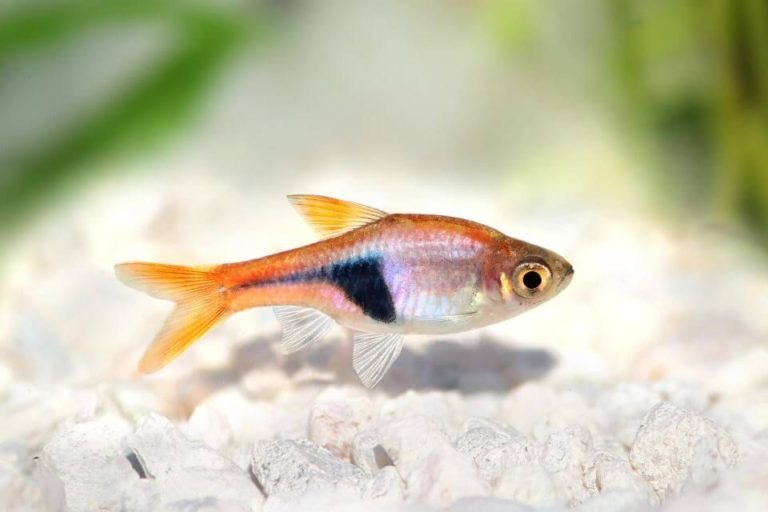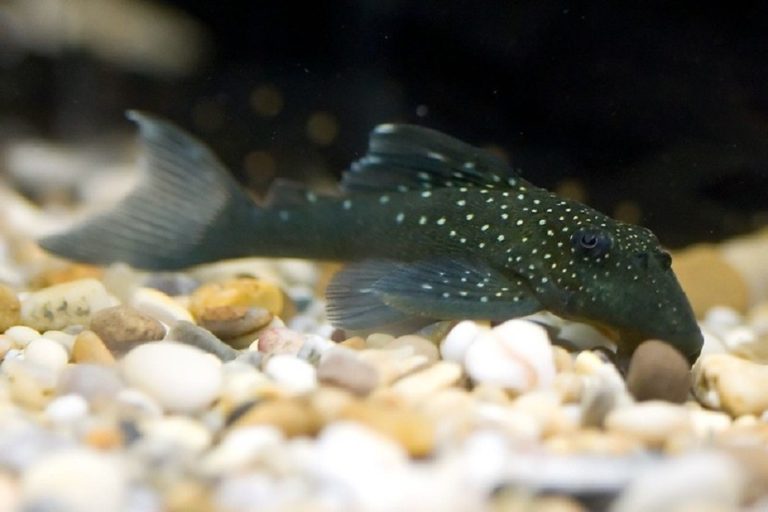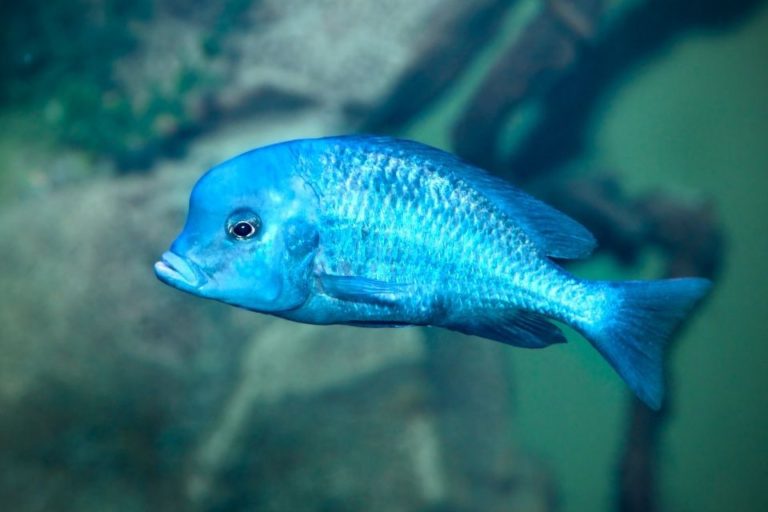Tiger Barb Care: Lifespan, Size, Diet, Tank Size and Tank Mates
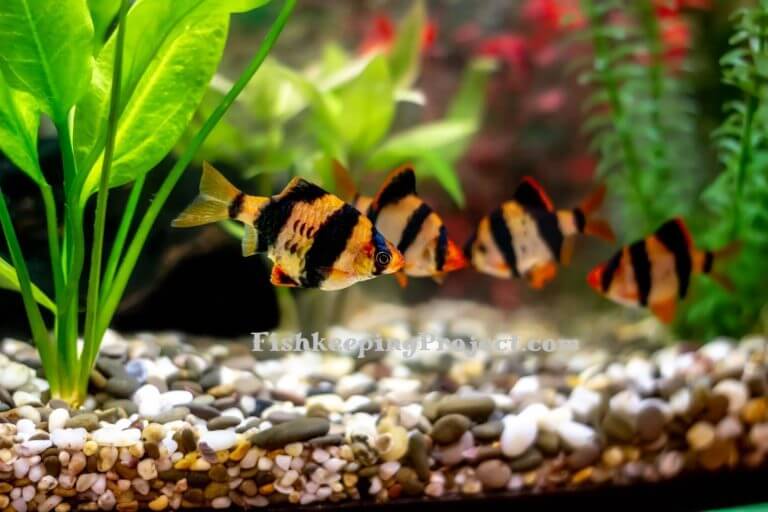
Tiger Barb is such an exciting and beautiful freshwater fish species. It comes with black stripes blended with either gold or silvery color to look spectacular.
Tiger barb species care requirements include a minimum of 20 gallons tank, 74 °F (23 °C) water temperature, a balanced diet, and a slightly acidic (6.5 pH) environment.
It would be best to note that tiger barb is relatively easy to care for and a perfect option for your home aquarium. Keep reading to learn more about the hidden fundamentals of breeding tiger barb.
This Tiger Barb care article covers everything you need to know about this species such as their behavior, characteristics, care, and breeding profile.
| Quick Facts: | |
|---|---|
| Common Names | : Tiger Barb, Sumatra Bard, Partbelt Barb |
| Scientific Name | : Barbus Tetrazona |
| Family | : Cyprinidae |
| Origin | : Sumatra, Indonesia, Borneo |
| Care Level | : Easy to Moderate |
| Lifespan | : 5 - 7 Years |
| Average Size | : 2 - 3 Inches |
| Diet | : Omnivore |
| Breeding | : Egg Layer |
| Social | : Active Schooling Fish |
| Temperament | : Playful, Semi-Aggressive |
| Minimum Tank Size | : 20 Gallons |
| Temperature | : 68 - 82 °F (20 - 28 °C) |
| Water Hardness | : 5 - 19 dGH |
| Water pH Level | : 6 - 8 |
Species Summary
Tiger Barbs are scientifically known as Barbus Tetrazona. They are also referred to as Sumatra barb and Partbelt barb. These feisty little fish species are native to Malaysia, Borneo, Sumatra, and Indonesia.
A lot of these species have been imported in large numbers and extensively bred to make them accessible to other countries. Non-native tiger barbs bred in captivity are quite common in the United States, Colombia, Singapore, and Australia.
These fish species are known to inhabit quiet rivers or tributaries with sand, thick vegetation, and rocks. The environment allows tiger barbs to get access to their feeds and high oxygen levels.
Tiger barbs are active swimmers and this is the reason behind their popularity in many home aquariums. The little fish prefer taking advantage of the space in the tank.
Top-notch care and good living conditions will make this aquarium fish live for a longer period. Failure to create optimal living conditions then the fish is likely to have a short life expectancy.
Tiger Barbs Size
When it comes to Tiger Barb size, this fish species usually grow about 2 to 3 inches long. You much give them optimal care to get their maximum size in your aquarium. One important this is food and water conditions.
Tiger Barbs Lifespan
Tiger Barb lifespan ranges from 5 to 7 years. But this is only achievable when you provide optimal living conditions. Some Tiger Barb lifespan is up to 8 years old in a captivity environment when you provide optimal care.
Tiger Barbs Typical Behavior
Barbs are active schooling fish species and they are widely known for being playful. These fish species spend most of their time swimming around the tank.
It is important to note that barbs may display aggressive and dominant behaviors. Barbs have the habit of bullying other smaller vulnerable fish in the tank.
Barbs might also nip the fins of slow-moving fish and even bump or bite the tank. The good news is that the behavior is more annoying than harmful.
The fish species usually form small hierarchies due to competition to enhance their dominance. It is the reason being their active swimming and nipping of one another in the middle of the tank.
I would recommend keeping barbs in a small school of at least five but not exceeding twelve. It is the best way of preventing barbs from harassing other tank mates.
But breeding one barb in a home aquarium is not a great option. The fish species will become apprehensive, and stressed, and spend most of the time hiding.
The Appearance of Tiger Barbs
Common Tiger Barb

Green Tiger Barb (Moss Green Tiger Barb)

Photograph Credit: Debivort at en.Wikipedia, CC BY-SA 3.0, https://commons.wikimedia.org/w/index.php?curid=17001390
The fish species have spear points that come along with pointed triangular snouts and wide flare bodies. Female barbs have rounder bodies and dull colors.
The male Tiger Barb size is slightly smaller with streamlined bodies and striking color markings. The golden color and black stripes resemble that of a tiger. The close similarities with the tiger happen to be the reason behind the naming.
Modern technology fosters breeding barbs in captivity and this has resulted in existing of barbs with unique color markings. Aquarium barbs have scales that are red, gold, green, and even pale silver.
Keep in mind that the fish might or might not have solid bands. You should note that the type of diet also plays a crucial role in determining the intensity of the colors. Male barbs are the brightest to attract female counterparts for mating.
Captivity breeding has also led to the development of the Albino variant. The type of tiger barb comes along with pale cream-colored scales and solid bands.
Tiger Barb Care
– Tiger Barb Tank Size
The Tiger Barb tank size depends on the size of the shoal. A small group of tiger barbs needs 20 gallons. In case you add one tiger barb then you need to add 3 gallons. It is because this type of fish enjoys swimming a lot.
– Tiger Barb Tank Setup
These types of fish are playful and need more room for swimming. While setting up the tank, at the bottom put a fine layer of gravel substrate. You can add large rocks and cobblestones that will make it appear sterling.
The large rocks and cobblestones show progress and allow the fish to move freely and explore the tank. Then add some water plants that will house the fish. It also gives rise to algae that the fish will feed on it.
Choose plants that will grow in the middle of the water column. Java fern and Water Wisteria are the most preferred plants to be added to the tank as they do not need specialized lighting and are suitable for the fish.
TIP: Using live plants in your aquarium is optional, and you can use artificial plastic plants. But unlike plastic plants, live plants maintain the water freshness by adding oxygen, utilizing nitrates, and removing carbon dioxide from the water. Hence the live aquarium plants are recommended.
The vegetation does not need to outgrow the rest of the tank as it will cause the fish to die by using all the oxygen and the fish will also not move freely.
A robust filtration system needs to be put in place to ensure that the water is nice and clean. It will help to avoid the increase in water temperature, pH, and hardness.
They also like to jump then the tank should have a lid to avoid them from jumping outside the tank. When the fish has conducive room for swimming it may help to do away with hostile behavior.
– Water Conditions
Tiger Barbs are freshwater fish, and they do not tolerate salty water. But they pretty much tolerate a wide range of water conditions. They especially do well in soft, slightly acidic water.
It calls for routine maintenance that involves the regular cleaning of the tank. They do not tolerate salty water.
Decomposing organic matter and fish waste will increase the number of phosphates, ammonia, and nitrogen in the water making it hard due to evaporation that occurs during the day when sunlight hits the surface of the water.
Water temperature should range from 68 °F to 82 °F, pH levels should be between 6.0 to 8.0 and water hardness should be 4 to 10Dkh. You need an accurate test kit that will enable you to read and make the right adjustments when necessary.
When the water in the tank has moderate to good movement, the male barbs tend to display their best coloration which is a broad red band that runs from the head to the end of the tail.
NOTE: The city water filtration system may not produce fish-friendly water. Our recommendation is to use an efficient water filtering system for your freshwater aquarium to maintain optimal water conditions.
– Common Diseases and Prevention
Like any other freshwater fish, barbs can be affected by various diseases. Ich and cottonmouth are among the leading diseases affecting barbs in the aquarium. These may arise due to the poor hygiene of the tank.
Ich is a protozoan disease caused by a parasite. It causes the introduction of white dots that cover the body of the fish. It is a deadly disease and can be passed from one fish to another through contact.
Most fish tank diseases are due to improper water hygiene. It causes an increase in temperature and water alkalinity. It will later cause an increase in hardness due to high amounts of ammonia, nitrogen, and phosphates in water.
The high amounts of ammonia, nitrogen, and phosphates occur due to fish wastes and decomposing matter inside the tank.
You can treat the disease using over-the-counter drugs. But the best remedy is to maintain high standards of cleanliness in the tank and monitor the water conditions from time to time
Tiger Barb Diet and Feeding
Tiger barbs are omnivores. It makes them feed on a variety of foodstuffs. It enables them to get nearly all the nutrients they require. This improves their health.
To boost their protein content, offer them frozen-dried and live food including shrimp, Daphnia, and bloodworms.
When the fish is fed with balanced diet food, they will show their best coloration and prosper.
Tiger barbs should be fed several times a day. Allow enough time for the fish to complete the food given. If you decide to feed the fish once a day gives them around five minutes to finish whatever food you have given them.
Gender Differences between Tiger Barbs
Both sexes of tiger barbs appear similar. However, the female one is heavier and larger, especially during the breeding season.
The males are smaller in body size and they are more brightly colored. During the spawning time, the males develop a red snout.
The females have a round belly and black dorsal fin. Males have bright red noses, with a red line on their dorsal fins.
Tiger Barb Breeding
When the Tiger Barb breeding period comes, an extra tank needs to be set aside. The barbs do not have parental sense whereby they will eat the eggs if readily available to them. For higher survival chances of the fry, then a separate tank has to be made.
Provide the tank with water conditions in mind. Put leafy plants in the water to produce algae that the barbs will feed on it. Put a grid in the tank to separate parents from their eggs. It will help to increase the chances of egg survival in the aquarium.
This stunning fish species need to be fed with high-quality food for them to exhibit the wanted characteristics. Choose the pairs to be bred by putting in mind the best coloration and markings.
Females are put in the breeding tank to develop eggs then males are introduced after a few days for mating. The males spread their fins to attract the females. After the male chases and nips the female, the female will start releasing eggs.
These eggs are distributed everywhere. But they are sticky and fall at the bottom where there are gravel and sand. A spawning grip allows the eggs to pass through and get maximum protection.
If there is no spawn grid, you need to keep an eye on the adult fish and remove them from the breeding tank after all her eggs have been laid.
The female may lay up to 300 eggs in the early morning in clumps of plants. The number of eggs laid will increase when the eggs mature. The female can spawn at about two weeks intervals.
The eggs take about 36 hours to hatch. The fry consumes the egg sac in a few days. They start swimming freely at the age of five days. At this time, you can feed them with fish food or baby brine shrimp up to the time they will be mature for flakes.
Tiger Barb Tank Mates
Tiger barbs are semi-aggressive, and this makes it difficult to choose Tiger Barb tank mates. It is not easy for them to become compatible with other fish. They are large enough to avoid being eaten by other fish.
It would be best to avoid slow-moving fish as the tank mates of tiger barbs. These fish species will become a target for tiger barbs to bully.
It is advisable not to keep tiger barbs with other fish with long-flowing fins as they will not have enough space to nip their fins hence being stressed.
The recommended Tiger Barb tank mates should be fast-moving and schooling fish for the characteristics to be compatible.
Some of the Tiger Barb tank mates you can try out include:
- Cherry Barb
- Rosy Barb
- Neon Tetra
- Pictus Catfish
- Tinfoil Barb
- Clown Loach
- Types of Plecos
- Cory Catfish
Are Tiger Barbs Aggressive?
No doubt tiger barbs are fascinating aquarium fish species. The vibrant colors and active behaviors make the fish species captivating.
These qualities and other hidden behaviors make tiger barbs the perfect choice for setting up a home aquarium and tank communities.
So, are tiger barbs aggressive? Absolutely. This tropical fish usually showcases nippy behavior and the tendency of bullying slow-moving fish species.
However, bullying behavior is more annoying than harmful. The tropical fish prefer living in a school for companionship and other social reasons.
My recommendation is to keep the fish in a group of about 6 to 8. It is the best way to tone bad behaviors from your barbs. It will also make the fish active by swimming around the middle of the tank.
Barbs will also fight amongst themselves and this is due to dominant behavior. It helps in the formation of small hierarchies in the aquarium.
We recommend keeping bards in their shoals and in large numbers to neutralize aggression. Remember also to provide adequate space and food to give the fish species more freedom.
The striking color markings and active activities make tiger barbs worth keeping in your home aquarium despite their aggressive behavior. The good news is that the behavior can be handled and managed with ease.
How Many Tiger Barbs Should be Kept Together?
As tiger barbs are more aggressive and playful, they need a lot of space for them to swim around and play. Due to this reason, they do not need to be many in a tank as they will not be able to swim freely.
The tiger barb fish thrive well in schools. They will be more aggressive and display some characteristics that they would not have displayed when alone. You can opt to put the barbs either in a community tank or species-specific tanks.
If you are looking to keep less than six barbs, consider using a species-specific tank. Those looking to breed at least five then consider community tanks.
In general, you can put 6 to 8 Tiger barbs together. If you put a fewer number it will make them more aggressive toward their tank mates. Also, you can keep around 12 tiger barbs in a community tank.
Final Thoughts
Tiger barbs are small with fascinating colors. The active schooling makes the fish species ideal for freshwater home aquariums and community aquariums.
Taking care of tiger barbs is super easy. But this is possible if you provide optimal living conditions for your barbs and feed them a well-balanced nutritious diet.
Especially, if you are a beginner at fishkeeping, keeping tiger bards is a fun and rewarding experience compared to other species. Tiger barbs are low-maintenance freshwater fish.
We hope this tiger bard care guide will be useful. Take the time to read through this guide and implement each step. We always try to maintain the most accurate and up-to-date information for our readers.
If you feel that we have missed out on something, you are very welcome to write your comments in the comments section below or contact us to share your thoughts.


